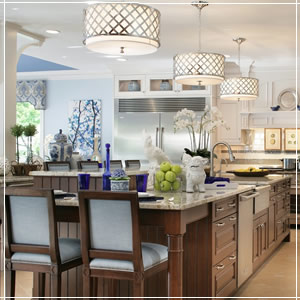You have probably heard this statement before – Always follow the ‘Rule of Three’ when decorating your home. What is this mysterious rule of three and how do we incorporate it into our home – and aren’t rules meant to be broken?
Most designers will tell you that the rule of three was put into effect due to the fact that an odd number of items looks more natural and less forced than an even-numbered grouping. Why is this? Well, mostly because too much symmetry makes a room look stale and cold (although, we all know symmetry plays a huge role in design, too). Essentially, there is a balance to be found between symmetry and asymmetry.
In order to make this balance more clear-cut, we have gathered a library of ten room designs that follow this rule of three – some follow it to the letter, others show how flexible the rule can be, and then some outright break the rule. Let’s look at these rooms to see how designers have dealt with this rule and how, at times, they have successfully broken the rule.
Three Colors In A Room
There is a standard equation that works best when choosing room colors – 60, 30, 10. 60% being the main room color, 30% being the secondary color, and 10% being the accent color.
This ratio can be applied to all interior and exterior colors that you choose for your home. Take for example your living room – 60% may be a neutral beige, 30% may be a bold navy blue accent wall, and 10% could be coral-colored throw cushions with navy blue trim/accents.
If bold color combinations are not for you, then choose three varying shades of the same color for a neutral, more calming room design. Either way, if you follow the rule of three when choosing colors, then you are guaranteed to achieve a room that is well-designed and welcoming.

How Many Light Fixtures Should A Room Have?
Three, of course! Yes, you cannot escape this rule of three even when it comes to lighting. This doesn’t mean that a room should only have three lights in it, rather it means a room should have three different styles of lighting.
Usually, a room should have one overhead light (on a dimmer), numerous lamps on side tables, and then accent lights such as picture lights, or track lighting, or under-cabinet lighting. In the image below, the room has one large overhead lantern, a table lamp, and then accent lighting on the bookshelves.
Essentially, most rooms should be lit by one main ambient light, task lighting (via side table lamps and floor lamps), and then accent lights. All of these layered light sources combine to create a balanced room.
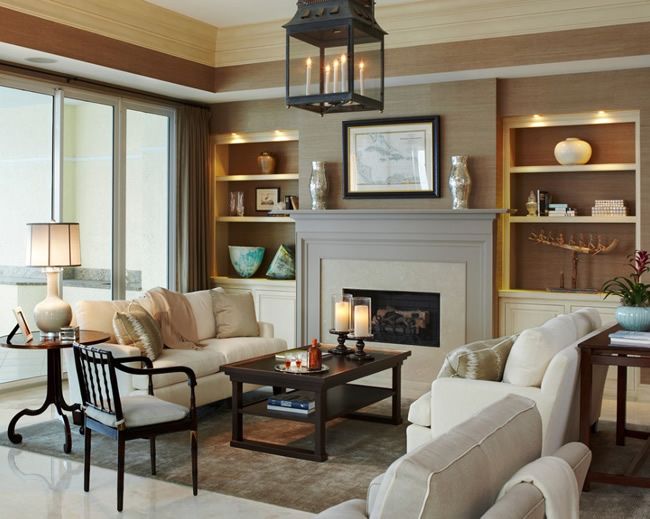
Arrange Furniture Using The Rule Of Three
Arranging furniture within a room can seem like a mystery. There seems to be too many rules when it comes to furniture placement. While you may be tempted to ignore some of those rules, we suggest you follow the rule of three in order to achieve a room that functions and flows.
Whether you have one large sofa and two large club chairs, or two dainty love-seats and one delicate chair – the rule of three will help you place your main furniture into cohesive groupings. It is important to create furniture groupings where size and shape mimic each other, creating an integrated look. The rooms visual height and scale can be adjusted with other various-sized objects, but furniture should be similar in size/scale/shape when grouped together.
Look to the bedroom in the image below; it is a very symmetrical room with one large bed and two large side tables – it would have looked “off” to have placed one small square ottoman at the foot of the bed, the scale would have been wrong. By placing three of the smaller ottomans, the room has maintained the correct scale and has an added visual interest.

Don’t Take The Rule Of Three Too Literally
Now that we have hammered this rule into your head, we are going to take a step backwards and tell you not to take it too seriously. Don’t run about your home making arrangements of three everywhere. Symmetry is not bad, nor is breaking the rules.
The rule of three is a guideline that can be bent. Essentially, it was put into place so that people understand that a odd-number of items is more interesting than an even-number of items. So, yes, you can arrange 5 items or 9 items into a grouping and still achieve the same visual interest.
As an example, look to the coffee table below. You will count 7 main items within the display, and they are all varying in size, height, and shape. So don’t be scared to mix it up and have fun.
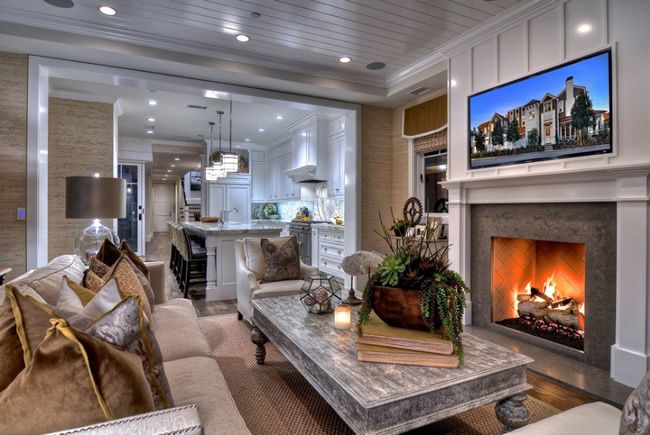
Windows in Three’s
While symmetry in architecture is imperative for a balanced design, there can be nice touch of visual fun by imparting the rule of three into your homes architecture.
While one side of the house may have 1 large window, the opposite side could feature 3 smaller windows whose scale, when combined, match and balance with the larger singular window. This is just a fun way that your home design can be unique and play with visual symmetry and balance.
The image below shows a great example of this; its three smaller windows balance well with the opposing large window by matching height and scale.
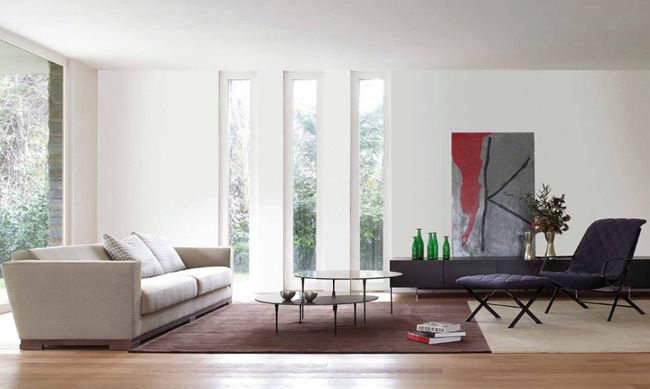
Scale Overrules All Other Rules
While we have shown that the rule of three adds visual depth and interest, there is something that makes that rule null and void – Scale. The scale or size of your room or items within your room may require you to break the rule of three.
If the island in your kitchen is small, it may look cluttered and over-powering to have three large pendant lights dangling above it, forcing you to only have two pendants instead. Or if you have a small, dainty coffee table it may look too “heavy” to arrange three items on top of it. On the other side of the scale spectrum, an item may be very large and require more than three items in order for it to maintain its balance.
Balance the rule of three with the scale of the room and its objects within, ensuring that your room is well-porportioned and scale-appropriate.
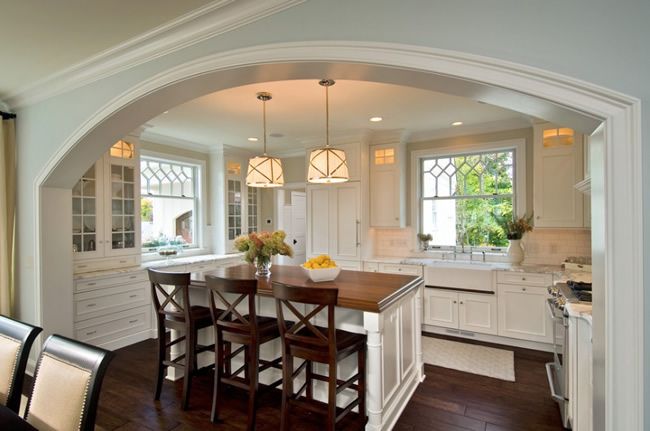
The rule of three is not so mysterious anymore – it is simply a fun way to add depth and visual interest to your home. Play with this rule and don’t get too caught up in the details of it. No matter what, rules can be broken, and sometimes the scale of an item doesn’t allow you to follow the rules.
Take pictures of your arrangements and let the camera tell you if something is “off”- pictures are great at revealing problems with the scale of your arrangements. Most importantly, have fun – decorating is not meant to be dreary.

